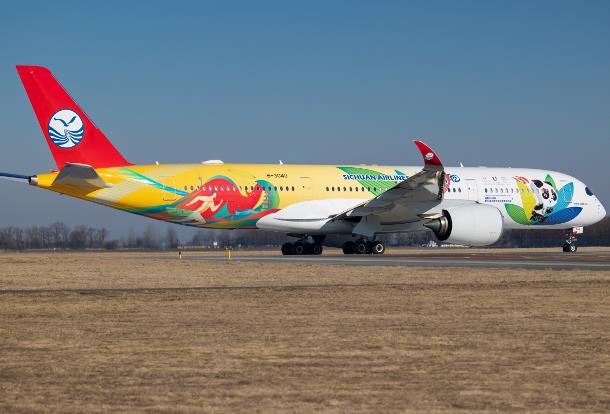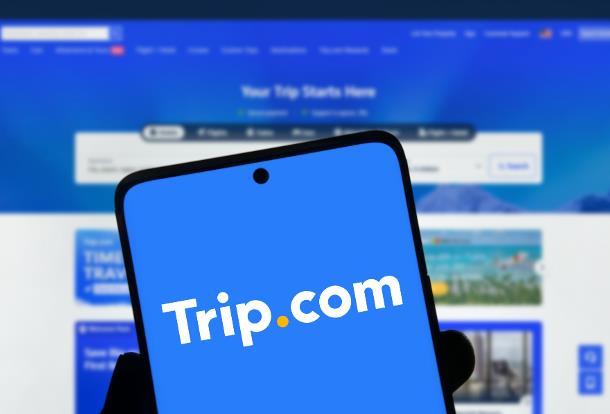ChinaTravelNews, Ritesh Gupta - Foreign carriers are exploring the capabilities of the likes of Meituan and Tongcheng-Elong as they look to strengthen their distribution mix in China.
Certain developments have emerged as the hold of the long-established online travel intermediaries such as Ctrip and Qunar is being increasingly challenged by other players.
Lufthansa Group, which already has direct connections with Ctrip, Qunar and Fliggy, is observing how air ticket sales are shaping up on some of the channels. “We are observing the total volume of ticket sales in case of Tongcheng-Elong and Meituan. We are also considering their respective technical capabilities,” shared Veli Polat, Senior Director Sales, Lufthansa Group Airlines Greater China.
The Lufthansa Group is already working with Tongcheng-Elong, but not yet with Meituan. It is also open to a direct connect option. Lufthansa already has a direct connect with Fliggy, Ctrip and Qunar, and such transactional platforms also generate business via non-NDC content. “That’s the idea. NDC will not replace everything…it is complementary to the existing channels in the distribution landscape,” said Polat.
In case of KLM, it has a Fliggy flagship store since February 2016, which started as a web-only initiative and eventually grew to a Fliggy mobile store. Plus, there is an HTML5 Mini Official site on WeChat and a mini program featuring price notifications. Though not launched yet, there are also plans for a Ctrip Flagship store.
Exploring all the options
Going by what all can be done, be it for running an official account, mini-program, flagship stores etc. in addition to providing content via direct connects or the non-NDC route, a lot is being evaluated by foreign airlines at this juncture.
The trend of rising options and increasing complexity is exemplified by the fact that Alipay, too, has released its own mini programs. So travel companies have to cater to different requirements, for example, according to the WeChat mini-program framework and a separate one for Alipay mini-program. Isn’t it becoming too complicated for a digital marketing team to cater to specific requirements?
“It’s not just Alipay that has its own mini-programs now, but also Baidu and Toutiao. This is becoming a trend for the way brands operate in China now. Brands will need to make choices about which platforms they build their digital capabilities and consumer touchpoints,” said George Cao, Co-founder and CEO, Dragon Trail.
Cao added, “The kind of app that hosts the mini-program will have an impact on the mini program’s use. As Alipay is a payment platform, their mini-programs are going to be much more commercial, and in the travel context, they’re used as LBS (location-based) shopping guides with tourism components, whereas WeChat mini-programs might be more LBS tourism guides with shopping components. WeChat, of course, also has its own mobile payment platform, but the app is much more than this. All of a travel brand’s target consumers are on WeChat, all of its target trade partners are on WeChat, and WeChat is present at every single touchpoint on a typical user journey.”
“WeChat or Tencent does not act as a merchant in any OA (official account) or mini-program. They have portfolio companies who act as merchants for various businesses, such as Tongcheng-eLong for hotel booking. They do have some mini-programs that they say they have developed themselves, such as the City Experience mini-program, but even here, WeChat/ Tencent is a software provider and an advertising platform, rather than a merchant,” added Cao.
The two typical modes of development on the WeChat platform are WeChat mini programs, and H5. H5 pages have been around much longer than mini-programs, and they work well for campaigns such as giveaways and games.
“Fliggy is not an OTA – it is a marketplace where individual brands are the merchants of their product and services. The marketplace provides traffic and e-commerce solutions (e.g., digital payment) for the brands who sell on their platform,” said Cao.
In case of Fliggy, consumers are used to one service within many apps, whereas in case of Meituan, this super app aggregates many different services into one touchpoint and the focus is on encompassing all daily transactional needs of a consumer, be it for food, transportation etc., using their payment details that are filed. This way they end up being high-frequency apps, and by being more utilitarian, they also find their way into a low-frequency buy like hotel accommodation or flights.
Evaluating the traffic matrix
The interplay of ecosystems/ walled gardens and transaction sites, and how traffic flows for conversion is extremely important. For instance, in case of Tongcheng-Elong, Tencent's contribution is significant from the perspective of ensuring that Tongcheng-Elong remains as the preferred entry point for travel-related transactions. Tongcheng-Elong's monthly average users (MAUs) rose to nearly 182 million by the end of June. Tencent-based platforms contributed 153 million MAUs by June this year. Currently, Weixin users can access Tongcheng-Elong's Weixin-based mini program in several ways, and these include via the Weixin wallet and a drop-down list of users’ favorite or most frequently used mini programs, interactive advertisements and the sharing and search functions in Weixin.
“(Airlines at large) are not too convinced about WeChat being the right platform to buy an air ticket as yet. There are two points to consider - first, WeChat mini-program demands a lot of preparation; second, travelers still opt for well-established transactional platforms for the bookings. Since Tongcheng-Elong capitalizes on the traffic driven by WeChat, carriers are looking at this indirect channel, rather than preparing for WeChat, say its mini-program, at this juncture,” said a source.
Certain international airlines aren’t looking at transactional capabilities of WeChat as of now. Rather they would look at Tongcheng eLong since it is a transactional site plus it is benefiting from traffic that is coming from WeChat. “Having a call to action to an OTA is not uncommon for travel brands in China, and Tongcheng-eLong is already built into WeChat. But some international airlines have developed transactional capabilities as part of their Official Account. This is a judgment a brand has to make based on the stage of their WeChat marketing efforts, and whether it makes sense to provide transactions or simply use their Official Account for awareness building,” said Cao.
Sienna Parulis-Cook, Dragon Trail’s Communications Manager, shared that based on what the team observes while putting together its weekly WeChat rankings for travel brands, there are some differences between the kind of content that airlines and hotels publish. “Airlines generally promote deals on WeChat, whereas hotels publish a lot of content about their loyalty programs, as well as hotel news, and features about the kind of dining or amenities/facilities available at the hotels. Hotels are much less likely to post content about discounted rates. Airlines also do publish some content relating to dining and facilities, but I don’t remember ever seeing a top airline post about a frequent flyer program,” she said.
Not just B2C
Lufthansa doesn’t have a WeChat mini-program yet but recently introduced an official account for its B2B partners, mainly travel agencies. It can be termed as a B2B communication account.
“We also intend to connect our B2B servicing to this channel. Then our agents won’t need to call us or email us, and rather would be serviced by this channel. Because it is clear that people are using WeChat on a regular basis - day in, day out - in China (that’s why makes sense to go ahead with this channel),” mentioned Polat. Travel agencies have to follow the account and depending on their association/the products they specialize in - MICE, certain routes etc. currently the European group has around 900 followers. “We are currently working with around 500 travel agencies in China and each agency has people working for them, they are contacts and they have to sign individually to be the followers of the account. This way they obtain information. We foresee around 2000-2500 followers and this would cover a majority of our travel agency partners we work here within China,” shared Polat.
“This channel is not just for promotional campaigns but even for product launches. Or if we wish to introduce a new product feature to a travel agent then the content can be shared out quickly. This channel is very handy in cases where, for example, there need to access the scheduling information so they don’t need to open the email and find it in a particular newsletter (or open a website), rather they can access information instantly via their preferred method. Also in case of WeChat, we can leave comments or provide feedback. We can also answer questions and everyone can see the responses. We can also keep track of the same. This channel would be strengthened further with the introduction of servicing in case any agent has an issue with a certain booking it can be sorted out. Of course, this would be done in a confidential manner because everything can’t be put out in the public domain in case there is a query for a specific booking. We are also sticking to data protection-related policies in China and also in other markets,” explained Polat.
It needs to be highlighted that foreign airlines work closely with their respective JV partners in China to strengthen their association with intermediaries.




